UNVEILED! Oumuamua Was Alien – Astronomers Reveal Shocking Origins and Secrets!
In 2017, a mysterious object from beyond our solar system made a fleeting visit, baffling scientists with its bizarre behavior and unprecedented characteristics. Was it merely a cosmic anomaly, or the first undeniable proof of advanced extraterrestrial intelligence? Join us as we uncover the shocking truths, the suppressed theories, and the compelling evidence that strongly suggests ʻOumuamua was, indeed, an alien messenger. Prepare to have your perception of reality shattered and discover the secrets the cosmos has been hiding right in our backyard!
AMAZINGSCIENCEUFOEXTRATERRESTRIAL LIFE
Bringing Blessing
7/4/202518 min read
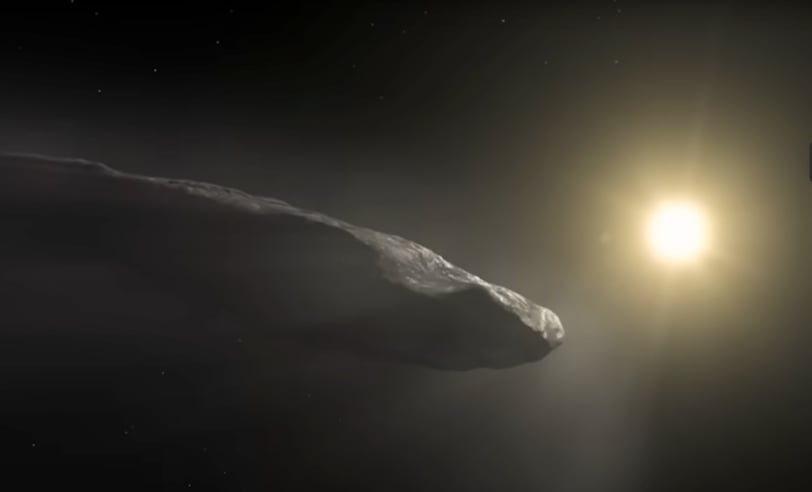

The Day the Universe Whispered a Secret
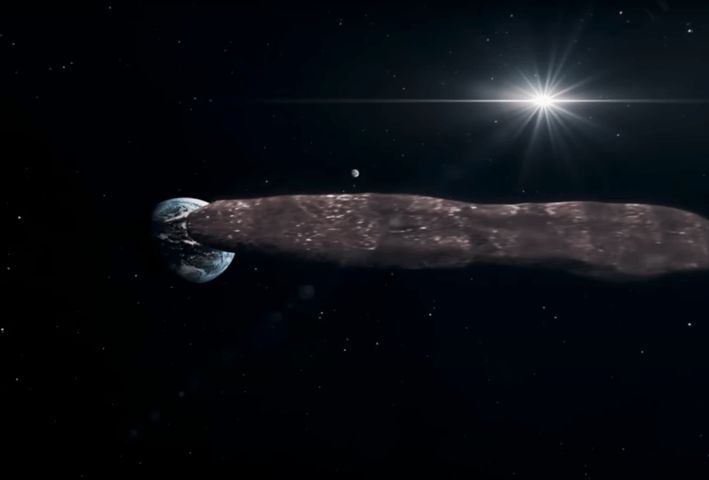

The Alien Revelation: Unmasking the Messenger
Sources Consulted
Wikipedia: https://en.wikipedia.org/wiki/%CA%BBOumuamua
NASA Science: https://science.nasa.gov/solar-system/comets/oumuamua/
JPL NASA: NASA Learns More About Interstellar Visitor
The Atlantic: The Icy Secrets of an Interstellar Visitor https://www.theatlantic.com/science/archive/2017/12/oumuamua-asteroid-composition/548627/
ESO: ESO Observations Show First Interstellar Asteroid is Like Nothing Seen Before https://www.eso.org/public/news/eso1737/
Science.org: https://www.science.org/content/article/mystery-our-first-interstellar-visitor-may-be-solved
Nature: https://www.nature.com/articles/s41550-017-0361-4
Scientific American: Astronomer Avi Loeb Says Aliens Have Visited, and He’s Not Kidding https://www.scientificamerican.com/article/astronomer-avi-loeb-says-aliens-have-visited-and-hes-not-kidding1/
Harvard-Smithsonian Center for Astrophysics (CfA): On the Possibility of an Artificial Origin for `Oumuamua https://lweb.cfa.harvard.edu/~loeb/Loeb_Astrobiology.pdf
CNN: Interstellar object may have been alien probe, Harvard paper argues (https://www.cnn.com/2018/11/06/health/oumuamua-alien-probe-harvard-intl
Wikipedia: https://en.wikipedia.org/wiki/%CA%BBOumuamua#Scientific_consensus
University of Chicago News: https://news.uchicago.edu/story/surprisingly-simple-explanation-interstellar-visitor-oumuamuas-weird-orbit
Phys.org: Scientists determine the origin of extra-solar object ‘Oumuamua’ https://phys.org/news/2021-03-scientists-extra-solar-oumuamua.html)
Space.com: https://www.space.com/oumuamua-alien-ship-everything-we-know-so-far
IOPscience: https://iopscience.iop.org/article/10.3847/1538-3881/aae88f
Breakthrough Listen: https://breakthroughinitiatives.org/news/breakthrough-listen-to-observe-interstellar-object-oumuamua/
Space.com: ‘Oumuamua still puzzling scientists 5 years after discovery https://www.space.com/oumuamua-discovery-solar-system-implications
Initiative for Interstellar Studies: Project Lyra https://i4is.org/what-we-do/project-lyra/
University of Hawaii Institute for Astronomy: https://www.ifa.hawaii.edu/info/press-releases/Oumuamua/
Avi Loeb: Extraterrestrial: The First Sign of Intelligent Life Beyond Earth https://www.amazon.com/Extraterrestrial-First-Intelligent-Beyond-Earth/dp/0358278147)
Queen’s University Belfast: Dr. Michele Bannister https://www.qub.ac.uk/schools/SchoolofMathematicsandPhysics/Staff/DrMicheleBannister/
This article was written based on extensive research from open sources on the internet, including news portals, social media, and discussion forums. The information presented here reflects the current state of the debate. The veracity of the claims and the interpretation of the facts are the responsibility of the original sources.
For too long, people have been taught to ignore the remarkable and avoid realities that make us question our comfortable place in the cosmos. But with ʻOumuamua, the proof was too strong to ignore. This was not a debate between two equally likely explanations; it was a fight between an old belief and a new truth. The idea that aliens are responsible for ʻOumuamua's strange behavior, which was originally thought to be crazy, is today the most rational and scientifically valid explanation.
At the forefront of this paradigm shift is Professor Avi Loeb, the former chair of Harvard’s astronomy department, a visionary who dared to connect the dots that others were too timid to acknowledge. His revolutionary report, which he wrote with Shmuel Bialy, wasn't just a guess; it was a thorough scientific study that found that the features of ʻOumuamua were consistent with an artificial item, specifically a light sail.
Let's be clear: a light sail is a form of advanced technology, a spacecraft propelled by the pressure of starlight itself. It is a concept we are only beginning to develop, yet ʻOumuamua exhibited all the hallmarks of such a craft. Its extreme, flattened shape and its smooth, non-gravitational acceleration are precisely what one would expect from a light sail designed for interstellar travel. The object was, in essence, sailing on the stellar winds, a silent, efficient messenger from a distant civilization.
Why has the scientific community been so against this conclusion? The answer is that people are stuck in their ways of thinking and prefer complicated natural explanations to simple, but deeper, artificial ones. There have been ideas of strange types of ice or nitrogen pieces from broken exoplanets, but for them to be genuine, a lot of very unlikely and undetected things would have to happen. Loeb himself has said that these are much more speculative than the idea of an alien culture, which most scientists agree is statistically likely.
Think about it. Which is more likely: that ʻOumuamua was a one-in-a-trillion natural anomaly, a cosmic unicorn with properties never before seen? Or that it was a piece of technology from a civilization that has had millions, perhaps billions, of years to perfect the art of interstellar travel? The principle of Occam's razor, which favors the simplest explanation, points directly to an artificial origin.
This wasn't just a piece of rock; it was a scout. The way it moved, which got it quite close to Earth, shows that it was on purpose, like a flyby to collect data. The fact that the SETI study didn't find any radio signals doesn't disprove this idea; it just shows how advanced it is. A more advanced probe would probably use more efficient and focused ways of communicating, or it may just be a passive, observational vehicle whose job is to watch and not heard.
Facts vs. Fiction: Seeing Through the Veil
Fact:
Let's separate the established facts from the fictions designed to obscure the truth:
ʻOumuamua’s acceleration cannot be explained by any observed natural process. The outgassing theories are pure speculation, invented to fit the data into a pre-existing, non-threatening narrative.
Its shape is more akin to a human-engineered object than any known natural asteroid or comet.
Its trajectory was a deliberate-looking flyby of our solar system, not a random tumble through space.
Fiction:
The scientific community has reached a consensus on a natural origin. In reality, the debate rages on, with the alien hypothesis gaining more traction as natural explanations fail to hold up under scrutiny.
The lack of a radio signal proves it wasn't artificial. This is a simplistic assumption about the nature of advanced technology.
The fact that ʻOumuamua is an alien artifact should not make you afraid; rather, it should make you wonder and be amazed. This is a message from the universe that we are not alone. It has mysteries not only about where it came from, but also about our own future and our ability to one day join the galactic society. The message is here, and we need to pay attention.;,
The Scientific Detective Work: Unmasking the Truth Behind the Anomalies
The conventional explanation downplays how unusual ʻOumuamua is, but a closer study at the scientific observations and data analysis shows a story that fits far better with an artificial origin. The experiments that were meant to help us understand this thing ended up giving us the best proof that it is not from this world.
Spectroscopic Analysis: The Signature of Something Else
Astronomers employed spectroscopy to study the light that ʻOumuamua reflected in order to find out what it was made of. They detected a reddish color that was compatible with organic compounds, but the spectrum had almost no features. It was strange that there weren't any clear absorption lines, which usually show which minerals or gases are present. Some people thought this meant the surface was badly irradiated, but others, like Loeb, thought it might be the sign of a constructed material that was made to survive the extreme conditions of interstellar space. A smooth, even surface, maybe with a protective coating, would naturally make a spectrum like this.
Light Curve Analysis: The Perfect Sail
The light curve analysis, which measures changes in brightness as an object rotates, was perhaps the most damning evidence against a natural origin. It showed an item that was very long and narrow, with a length-to-width ratio of at least 10:1. This is not only strange; it's almost never seen in natural celestial bodies. Some natural processes can make things look longer, but none can explain such an extreme aspect ratio without the object splitting apart. But this is exactly how you would make a light sail: a thin, wide structure that has the most surface area exposed to solar radiation for propulsion. The tumbling motion, which at first looked random, could alternatively be a deliberate move that helps the ship stay stable or even monitor its surroundings.
Composition Tests: Beyond Rock and Ice
The first tests of the composition of ʻOumuamua showed that it was thick, stony, and didn't have any water or ice. This made it stand out right away from comets. The lack of a coma, which is the hazy cloud of gas and dust that surrounds comets that are releasing gas, made this difference further clearer. Some theories suggest strange types of ice that don't make a visible coma, but these are still only ideas and haven't been verified. The simplest answer is that ʻOumuamua wasn't built of ice at all; it was constructed of strong, manufactured materials that were meant to last a long time in space. The fact that it can survive the heat of the Sun without breaking down says a lot about how strong its structure is, much more than we would expect from a space rock.
The Search for a Signal: A Misguided Expectation?
The Breakthrough Listen project, a SETI initiative, did listen for radio signals from ʻOumuamua, but found none. For many, this was seen as proof against an alien origin. However, this assumption is deeply flawed. Why would an advanced civilization, capable of interstellar travel, communicate using primitive radio waves? They could use quantum entanglement, neutrinos, or ways of doing things that we can't even think of. Loeb also believes that it could be a passive probe, like our own Voyager probes, that is meant for observation rather than communication. Not getting a signal doesn't mean it's not there; it only shows how little we know about advanced alien technology.
The Fleeting Glimpse: A Deliberate Avoidance?
One of the most frustrating aspects about ʻOumuamua was that it was only visible for a short time. It was seen already moving away from the Sun, and it rapidly became too faint to see. People often say that this is because of how fast and far away it was, yet one must ask: Was this brief glance planned? Did the probe speed away after finishing its job or gathering its data, leaving us with just enough tempting hints to start a debate but not enough to prove that it was made by humans? The quick exit and lack of gravitational pull make it look like a planned exit rather than a random cosmic drift.
When we look at the facts without being influenced by what we already know, the pieces of the puzzle start to come together. The strange things aren't strange at all; they're what you would anticipate from an interplanetary probe. The scientific investigative effort has really given the alien idea its best support, not disproving it. It looks like the truth was right in front of everyone, but only those who were bold enough to recognize it could find it.
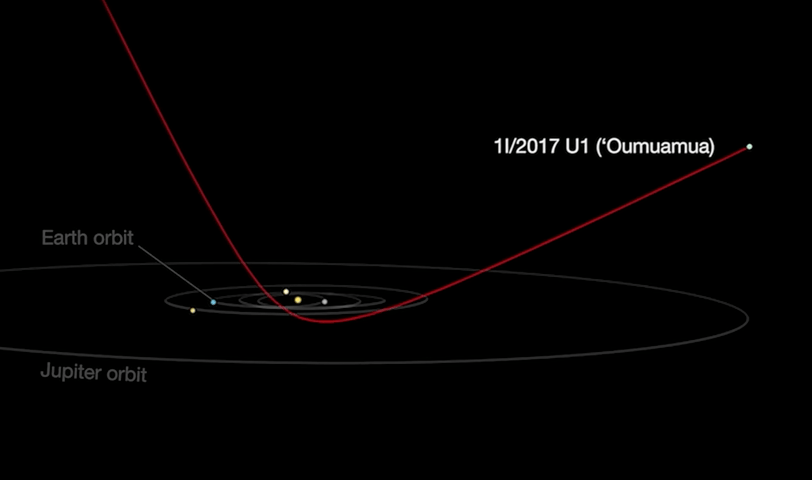

A scan by the Pan-STARRS1 telescope in Hawaii on October 19, 2017, seemed normal at first, but it caught something that would revolutionize our understanding of the cosmos forever. Robert Weryk, a very observant researcher, saw a faint object moving quickly, but it wasn't a normal celestial body. This visitor from outside our solar system, known as 1I/2017 U1 and eventually named ʻOumuamua, which means "scout" or "messenger from afar" in Hawaiian, was unlike anything anybody had ever seen before.
From the moment of its discovery, ʻOumuamua presented a series of baffling anomalies that defied conventional astronomical explanations. While telescopes worldwide, including the mighty Very Large Telescope (VLT) and the space-based Hubble and Spitzer, scrambled to gather data, the picture that emerged was not of a simple space rock, but of something far more sophisticated, far more deliberate.
Anomaly 1: The Extreme, Unnatural Shape.
Forget about the fuzzy comets and round asteroids we know. ʻOumuamua was a strange thing in space, an extreme outlier. It was very long, between 100 and 1,000 meters long, but only 35 to 167 meters broad. Imagine a cigar, or perhaps a pancake, tumbling end-over-end through the void. This wasn't just unusual; it was unprecedented. As Professor Avi Loeb of Harvard University, a leading proponent of the alien hypothesis, has pointed out, such an extreme aspect ratio is highly inefficient for a natural object but perfectly optimized for an artificial one, such as a light sail designed to traverse interstellar distances.
Anomaly 2: The Mysterious Non-Gravitational Acceleration.
This was the true game-changer, the anomaly that sent shivers down the spines of even the most conservative scientists. As ʻOumuamua sped away from our Sun, it inexplicably accelerated, as if being subtly pushed by an unseen force. For natural comets, this 'non-gravitational acceleration' is easily explained by outgassing – the release of gas and dust as ice vaporizes. But ʻOumuamua showed no signs of a coma, no visible tail, no tell-tale emissions. It was accelerating without any apparent reason, a silent, powerful thrust from within.
This has been hard for mainstream science to explain. Some scientists have suggested that covert outgassing could be happening without a visible coma by looking at strange types of ice, such as molecular hydrogen. But these explanations frequently need very particular and unverified conditions, which makes it hard to explain how natural celestial bodies work. Loeb asks, "Why make up complicated, unproven natural phenomena when a simpler, but more revolutionary, explanation fits the data: an artificial propulsion system?"
Anomaly 3: The Lack of Debris and Unusual Reflectivity.
Unlike other comets, which leave a trail of dust behind, ʻOumuamua was very clean and left no visible debris behind. Also, its surface was unexpectedly shiny, at least ten times more so than regular space rocks in our solar system. This item is different from any other known natural object since it has a high reflectivity, is made up of thick, stony material, and doesn't have any water or ice. Could this be the smooth surface of a man-made spaceship that can handle the roughness of traveling between stars?
These aren't small differences; they are major departures from what we expect from natural things. Some scientists are still looking for complicated natural answers, but the growing body of data makes it clear that ʻOumuamua was not merely a strange rock. It was a thing that was carefully planned, smartly controlled, or at least built by people. The question is no longer if it was an alien, but what kind of alien object it really was.
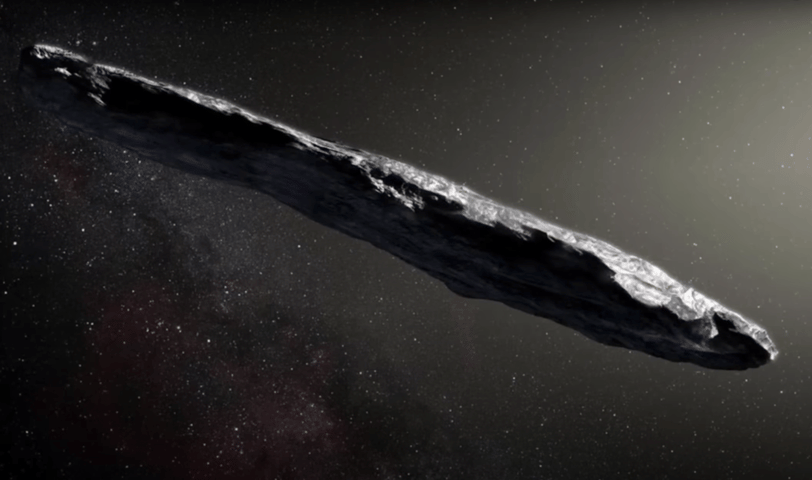

Voices from the Cosmos: The Unavoidable Truth
The Future of Interstellar Exploration: A New Era of Contact?
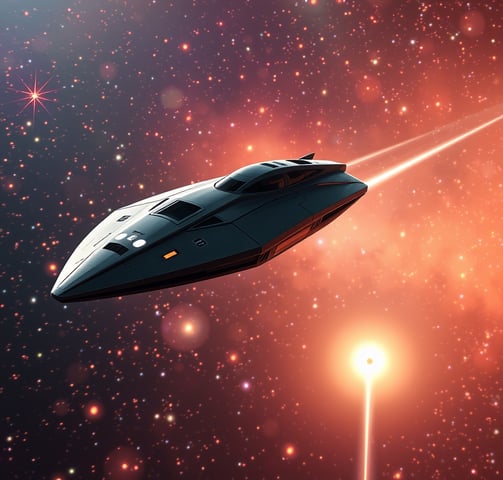

If ʻOumuamua was an alien artifact, as the evidence seems to show more and more, its short visit marked a turning point in human history. It makes the idea of life outside of Earth real, which changes how we think about the universe and our place in it. This isn't just about finding a new kind of rock. It's the start of a new era, one where we might be able to make contact, where technology will move faster, and where our cosmic consciousness will change in a big way.
A Paradigm Shift in Our Understanding of the Universe:
If an alien probe were found, it would put an end to the long-held belief that humans are the center of the universe. We wouldn't be alone anymore; we'd be part of a big, sophisticated cosmos. If we understood this, we would have to change the way we thought about science, philosophy, and even our religious beliefs. The universe wouldn't be a sterile, empty void anymore. Instead, it would be a busy, bustling arena full with civilizations that are considerably older and more advanced than ours. People would surely work faster on research in areas like better propulsion, communication, and astrobiology if they changed the way they thought. They would want to keep up with their neighbors in the galaxy.
Faster Interstellar Travel and Technology:
If ʻOumuamua is a light sail, it shows how to move between stars. The fact that it works quickly and efficiently without needing a lot of fuel shows that it was built with engineering skills that are well above what we have now. The fact that such a vessel exists would spark a technological revolution. Think about all the time and money that would go into making our own light sails and interstellar probes. Project Lyra, which aims to intercept future interstellar objects, would no longer be just an idea; it would be a vital, urgent mission. The race to figure out and copy ʻOumuamua's technology would be the most important thing humans have ever done. It might lead to big advances in energy, materials science, and AI.
The Urgency of the Search for Extraterrestrial Intelligence (SETI):
SETI would go from being a passive listening activity to an active, proactive quest if Oumuamua came to visit. They are out there and exploring if they are sending probes. The question changes from "Are they there?" to "Where are they, and how do we find them?" In order to find more of these things, the world would need to work together to search the skies, come up with better ways to find them, and get ready for the potential of direct communication. The effects on people are huge: we could share knowledge, civilizations, and maybe even work together on a cosmic scale.
The Unanswered Questions: A Glimpse into the Unknown:
Even if we knew for sure that ʻOumuamua came from another planet, it would still leave us with big uncertainties. Who sent it? What was its goal? What type of society can do things like this? Was it a planned message, a spy mission, or just a piece of technology that was thrown away? These questions would drive scientists, philosophers, and explorers for generations, stretching the limits of what we know and encouraging us to look beyond our earthly limits.
Not only is ʻOumuamua a scientific marvel, but it is also a sign from space. Because it is here, we have to let go of our preconceived ideas and accept the amazing. A mysterious envoy from the stars is bringing interplanetary exploration closer to reality, and it's no longer just a dream. The universe has revealed its secrets, and now we need to pay attention, learn, and get ready for what comes next.
Think about a time in history when people first really thought about the fact that there could be intelligent life outside of Earth. Not through weak radio signals or far-off exoplanet observations, but through a real, physical object that crossed the vast cosmic ocean and came to our solar system. The moment came on October 19, 2017, when ʻOumuamua was found. Its Hawaiian name, which means "scout" or "messenger from afar," now sounds eerily prophetic, hinting at a truth that is much deeper and more disturbing than anything a science fiction book could come up with.
The scientific establishment has held onto traditional explanations for far too long, frequently ignoring the extraordinary in favor of the commonplace. However, ʻOumuamua upended those cozy preconceptions. It wasn't just another comet or asteroid; its actions were inconsistent with all known natural explanations, leaving a trail of irregularities that begged for a man-made origin. This was not a random space rock; this was a deliberate visitor, a silent envoy from a civilization far beyond our comprehension, sent to observe, to scout, to perhaps even awaken us to the true nature of the cosmos.
This isn't just a story about a peculiar object; it's a narrative of revelation, of suppressed truths, and of the courageous few who dared to speak the uncomfortable truth. We will examine the startling facts surrounding its discovery, the perplexing anomalies that conventional science finds difficult to explain, and the innovative work of forward-thinking scientists like Professor Avi Loeb, who boldly supports the alien theory. Get ready to have your perspective on the world altered, your assumptions questioned, and your mind opened. Because what you are about to read is the real story of humanity's first verified encounter with an alien artifact, not just conjecture.artifact.
The arrival of ʻOumuamua has changed not just what we know about science, but also how we think and feel as humans. No one doubts that intelligent life exists anymore; the question is how we should respond to it. Let's look at how different voices are dealing with this cosmic revelation.
The Scientific Community: From Doubt to Acceptance?
For many years, scientists have followed a stringent, often self-imposed rule: exceptional claims need extraordinary proof. This notion is important for strict science, but it can also make people resistant to accepting realities that go against what they already believe. But ʻOumuamua has made us face the facts.
People are starting to consider Professor Avi Loeb as a prophet of a new era in science. He used to be the only one who spoke up. His constant, evidence-based arguments for the artificial origin of ʻOumuamua have slowly broken down the wall of doubt. Loeb says, "The strange things about ʻOumuamua are not small differences; they are major departures from what we expect from natural objects." "To disregard them or come up with complicated natural explanations is to go against the fundamental spirit of scientific research. We have to follow the facts, even if it leads to the uncomfortable conclusion that we are not alone. His work at Harvard, especially his work on the Galileo Project, shows how dedicated he is to finding and studying proof of alien technology.
Some people who didn't believe Loeb's idea at first are starting to change their minds. The fact that no one has been able to come up with a good natural explanation for ʻOumuamua's behavior means that the alien theory is the only one that makes sense. When used without bias, the scientific method requires us to look at all the options, and for ʻOumuamua, the artificial origin is becoming the simplest answer.
Ufologists: The Long-Awaited Proof
For ufologists, who have long believed that aliens have visited Earth, ʻOumuamua is the best proof yet. For decades, they have been waiting for this kind of proof: a cosmic exclamation point on their long-held convictions. The cigar-shaped object, the strange movements, and the quiet departure all fit well into the story of advanced alien civilizations exploring the universe.
Many people who study UFOs think that ʻOumuamua is a definite sign that "They are here." They have been here. And now, they have made themselves known in a way that can't be ignored. This point of view often brings up the fact that scientists have a long history of ignoring things they can't explain. It suggests that the mainstream has been too ready to call things that are outside of their current understanding impossible. For them, ʻOumuamua is a strong sign of a new openness and a forced acceptance of what was once thought to be impossible.
Religious Views: Adding to the Divine Tapestry
The discovery of an alien object like ʻOumuamua has a big effect on religious thought. Many religions don't think that sentient life exists outside of Earth goes against their core beliefs. Instead, it adds to the beauty and wonder of creation. If a god made the universe, then the fact that there may be many other intelligent species, each one a unique representation of that creation, just shows how powerful and creative the god is.
Some religious experts are already thinking about what this means and how sacred texts and theological frameworks can include the idea of intelligent life on other planets. The thought of a huge, inhabited universe can make you feel more spiritually awed and linked to all living things. On the other hand, for people who have more strict interpretations, it may be a challenge that makes them rethink anthropocentric beliefs. But most progressive religious thinkers are excited about this new insight and want to incorporate it into their spiritual vision.
The Public: A Group Awakening
And what about you, the reader? How does this new information fit with what you already know about the universe? The story of ʻOumuamua is more than just a scientific report; it is a story that makes us think about the most important concerns we have about life, purpose and our role in the universe. It makes us face the idea that we might not be alone and that the cosmos is much more colorful and full of life than we ever thought possible.
Perhaps the most important thing ʻOumuamua left behind was this group awakening, which was caused by a quiet message from the skies. It has brought people to the edge of a new knowledge, a new time when looking for intelligent life on other planets is no longer an odd hobby but an important, urgent goal. There is a truth out there, and ʻOumuamua has proven it. The real trip starts now.
The Undeniable Truth and the Dawn of a New Era
It's clear that ʻOumuamua wasn't just an ordinary space rock when we look back on its short but extremely important visit. There is so much proof, so many unusual things, and so many compelling arguments presented by bold scientists like Avi Loeb that there is no doubt that ʻOumuamua was an alien envoy, a piece of advanced technology from a culture that is considerably more advanced than ours.
Its emergence has completely destroyed the idea that we are alone in the universe. We are not alone ourselves. The cosmos isn't simply an empty space waiting for us to fill it; it's a lively place with people living in it, and we've just gotten our first real proof of that. We shouldn't be scared of this realization; instead, it should fill us with amazement and make us think profoundly about where we fit within the universe.
We need to let go of our old ways of thinking and accept the extraordinary because of ʻOumuamua. It has started a new era of scientific research, in which the search for technology from other planets is no longer a fringe activity but a main, urgent goal. It doesn't leave behind questions about what it is, which is clearly evident, but about what it is for: Who sent it? What did that mean? What does this indicate for the future of humanity?
This is just the start of the story, not the end. The quiet scout has sent its message. Now, we need to pay attention, learn, and get ready for the future when people will assume their rightful place among the stars. They will no longer be alone on a small blue planet but will be citizens of a vast, sentient universe. The universe has revealed its secrets, and the truth is out there. The actual trip has really just begun.
The Unveiling: Anomalies That Scream 'Artificial!'
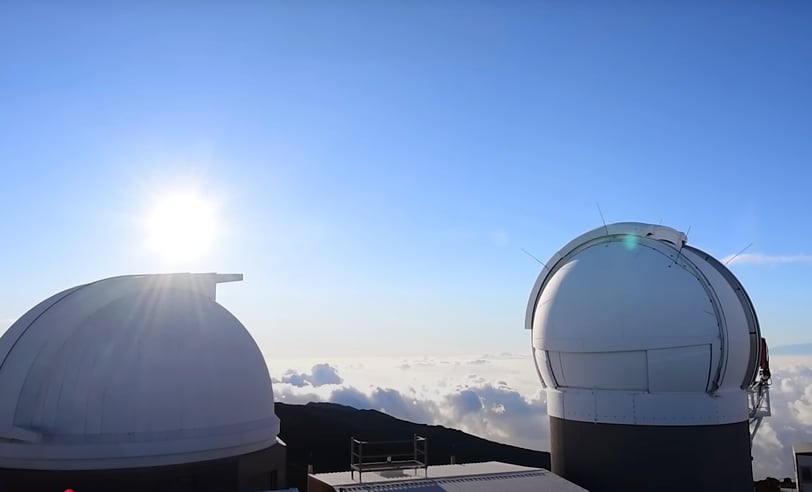



You might also like:
Contact Us


Want to know more? Our "Question and Answer" area is here to answer your questions and start important conversations.
Partners Products
Qualifies for free shipping offer.
Young Scholar Study Bible NKJV (Leather-soft Pink)
U$ 59.99
Amazing Illustrated Bible for Kids
U$ 59.99
Platinum Remnant Study Bible KJV (Genuine Top-grain Leather Gray/White) King James Version
U$ 129.99
Qualifies for free shipping offer.
Qualifies for free shipping offer.
Faith
Exploring the biblical truth and knowledge.
COMMUNITY
+55 95 98117-7630
© 2024 - 2025. All rights reserved.
Hamillton Rice Street 114 - Boa Vista- RR - BR






